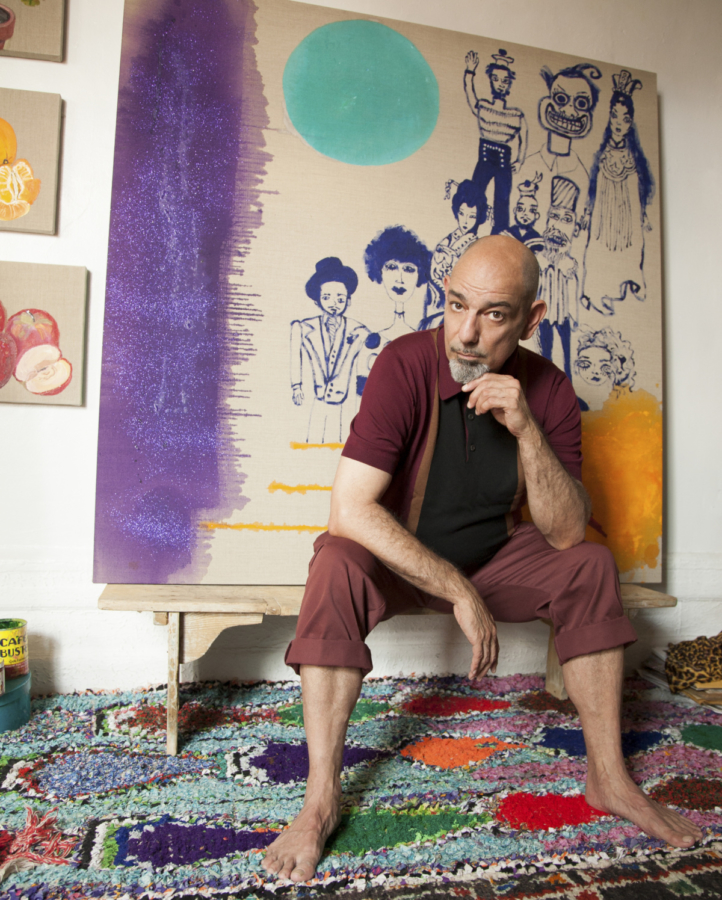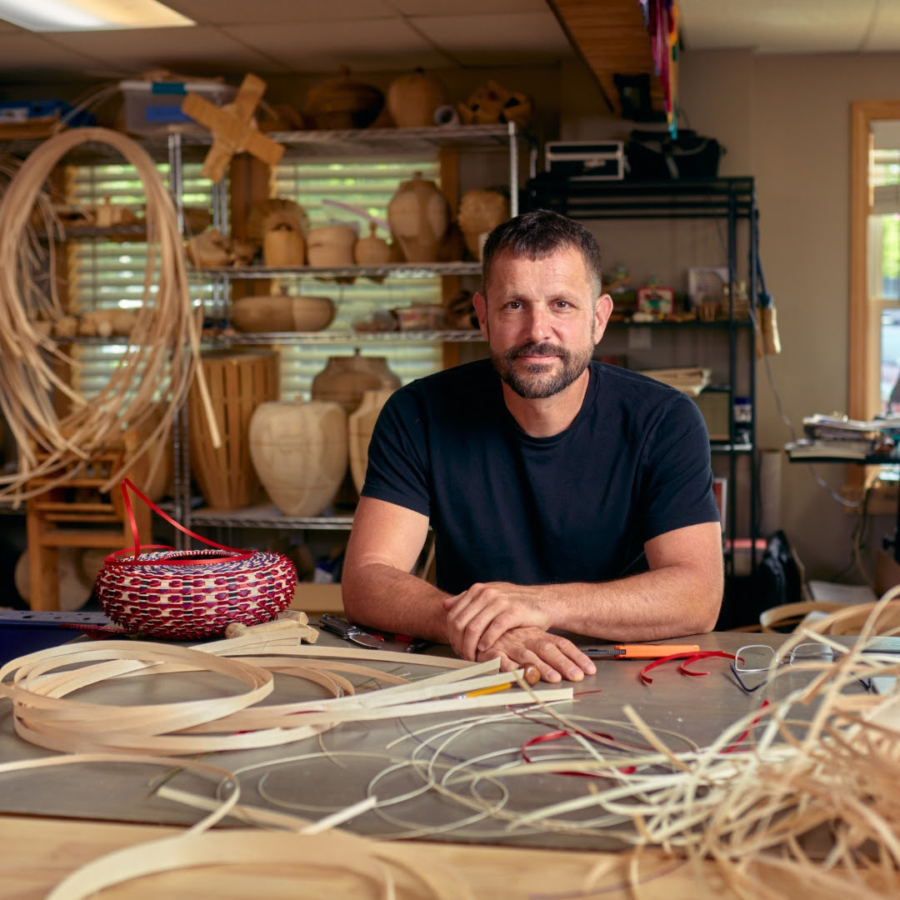October 24, 2018
Download as PDF
View on Cultured

TABBOO! IN THE EAST VILLAGE APARTMENT WHERE HE HAS LIVED AND WORKED FOR ALMOST 40 YEARS. PRODUCED BY MICHAEL REYNOLDS.
On a scorching New York Sunday, Tabboo! welcomes me to his Alphabet City apartment, where a generous variety of plants orchestrate a domestic greenery. We perch by a living room window that opens up to a city full of inspirations, seen in his recent cityscape paintings that were exhibited alongside works of his from the 1980s to great acclaim at Gordon Robichaux gallery last fall. “I have always been a prolific painter who never stopped working,” the artist explains of the attention his canvases have garnered in recent years. Some of his earlier work, including two paintings from 1982 and a large selection of Xerox art and collage flyers for his early performances and exhibits in the city, was recently included in MoMA’s group exhibition “Club 57: Film, and Performance, and Art in the East Village, 1978–1983.”
“In my little cocoon, I’ve been fermenting and getting better and better,” he adds, the word “better” echoing inside the one-bedroom apartment where he has lived for 40 years. In the ’80s, Avenue C stood for “crazy,” defining anyone who risked stepping foot in the brutal neighborhood (Avenues A, B and D were nicknamed “all right,” “brave” and “death,” respectively). Despite its agile gentrification, Alphabet City is critical for Tabboo!, and so is his apartment-cum-studio. “The best thing about this place is its gorgeous sky view,” he says, pointing at the endless blue framed by skyscrapers edge to edge. “When I first started my cityscape paintings, I was on my personal spiritual quest,” he remembers. “The way the sky communicates with people is completely different than reality down here.” From wall-spanning to intimate scales, his paintings come from this living room and are created horizontally with cues from his surroundings.
Accompanying his foremost medium, acrylic, are occasional dashes of glitter, of which he has an unending stash scored more than 30 years ago when a glitter factory on 14th Street shut down and discarded boxes of leftovers on the street.
Born Stephen Tashjian to Armenian-American parents in Massachusetts, the artist eventually moved, gradually building a reputation as a drag performer, illustrator and stage designer. For a pseudonym, he combined the first two letters of his last name with the name of his aunt, Boo, the only artist he knew growing up. “I used to do my makeup the same way I make my paintings,” he laughs. He applied similar makeup to Marc Jacobs for a photo shoot during their collaboration for the designer’s 2016 fall collection, in which Tabboo! hand-painted directly on garments for the runway show and Jacobs used his artwork on a wide variety of clothing and accessories.
Even during the height of his stage career, Tabboo! held onto his paint tubes and linen canvases. Of his many creative outlets, painting encapsulates his overall creative force, with hints of nightlife and drag mixed in. The eccentric figures in his recent paintings, such as The Prince or Geisha To Go (both from 2018), are inspired by puppets in his collection. While his urban views are wildly mesmerizing with their nocturnal melancholia or luminous zeal, the standing figures based off his puppets manifest his panache. Their impossibly intricate fashions and unabashed flamboyance salute Weimar Era extravaganza and the heyday of the East Village in the ’80s—two eras particularly inspirational for Tabboo!. In addition to the lushness of his brushstrokes, his untouched linen surfaces elevate the figures as if they are a stage, building up yet another layer of texture and meaning.
Busy months are on the horizon for Tabboo!. He created artwork and imagery for this year’s return of the East Village’s iconic drag festival, Wigstock; Gordon Robichaux’s NADA Miami booth will be dedicated to his new paintings; and his imagery is be featured on a bookmark, tote bag and advertisements celebrating Printed Matter’s new East Village location. And, for those looking for even more Tabboo!, sweatshirts featuring original artwork by the artist are now available via the über-popular streetwear brand Supreme.



